Rig tour: Jimmy Eat World on how Fractal put an end to Riverdance and why only .013-gauge strings will do for Jim Adkins' signature Fender
For the tonally adventurous punks, heavy gauges and the super-practical Fractal Axe-Fx IIIs are heaven

There has never been a pre-show vibe more calm. Jimmy Eat World’s latest album, Surviving, was released last night; another sold-out beckons tonight, and it’s just, well – it’s just so quiet.
All is well, serene. Maybe that is due to the gear decisions Jim Adkins and Tom Linton made some time ago, having had the Fractal Axe-Fx units recommended to them by Kenny Andrews of Failure. Now, they place all their faith – and their tone – in the Fractal Axe-Fx III. It makes life easy. They wheel in a case, use MIDI switching systems from RJM to access their tones, and off they go.
Elsewhere, Adkins uses his signature Telecasters and a Maton acoustic, while Linton uses a Gibson SG as his number one and a couple of genuine curios, such as a Gibson Challenger and a truly weird electric that we’d love to identify for you, but one that even Linton has no idea what it is.
Here Adkins and Linton make the most of the tranquility to talk Total Guitar through the ins and outs of their rigs...
Jim Adkin's rig
Fender Jim Adkins JA-90 Telecaster Thinline
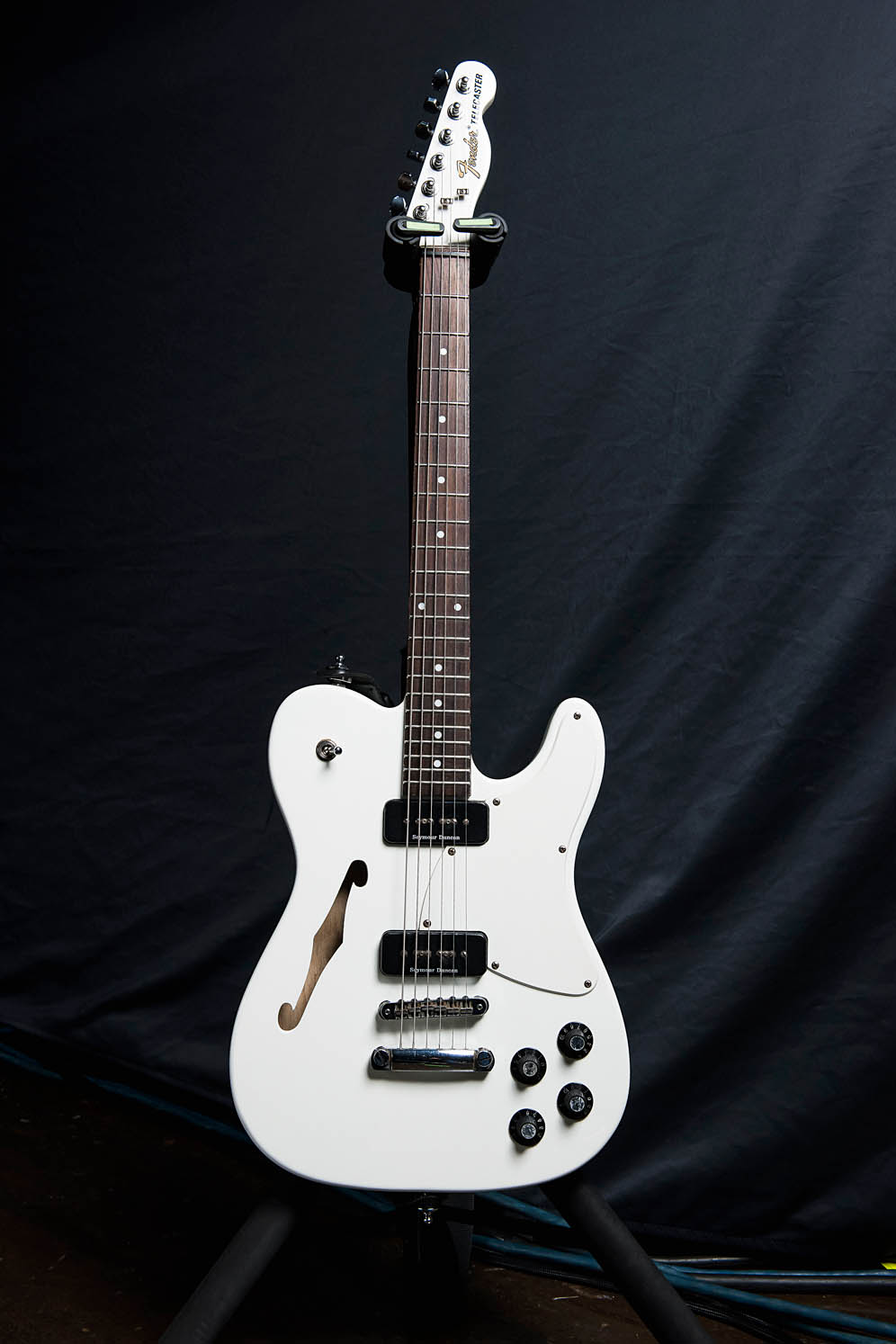
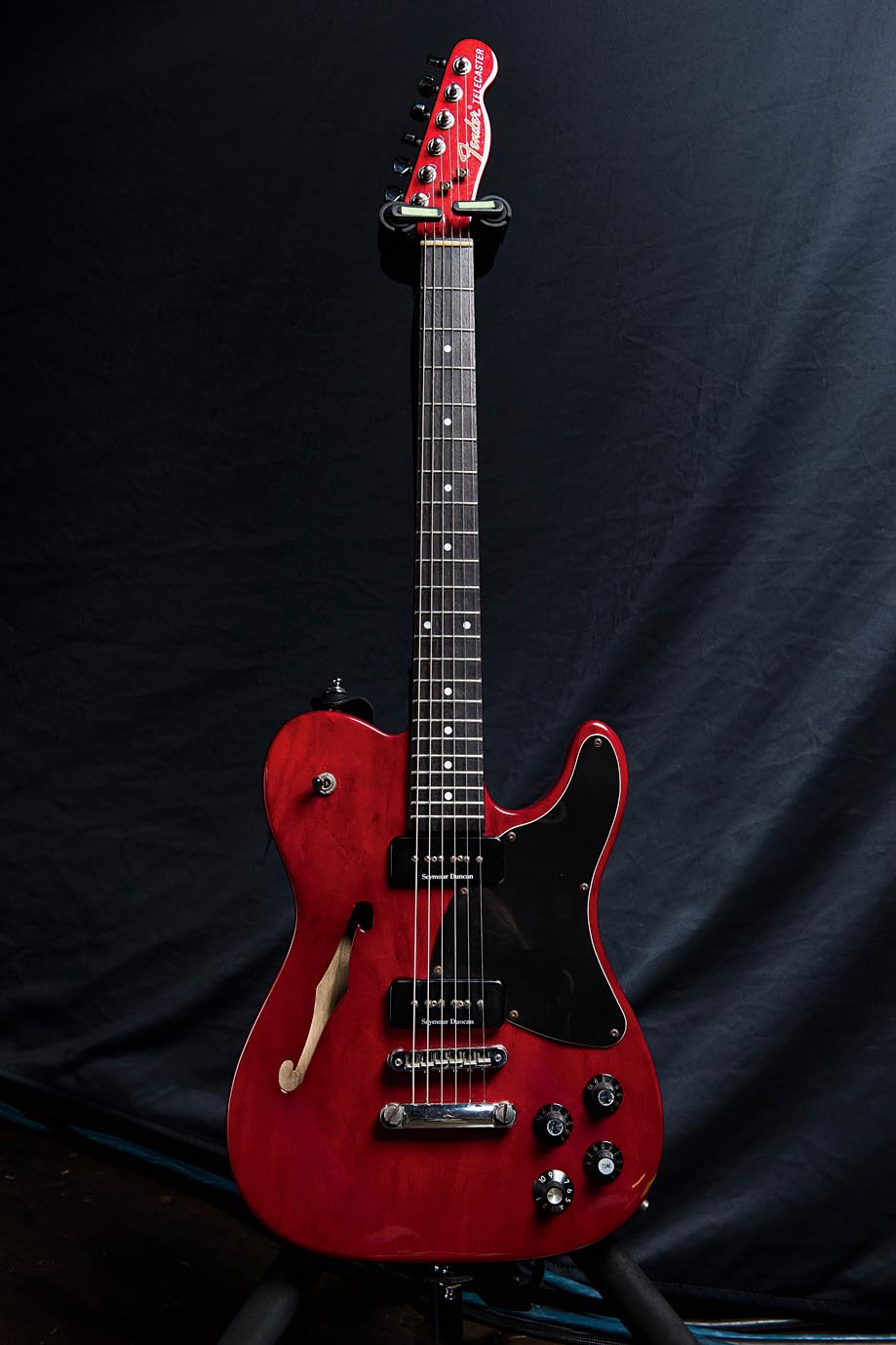
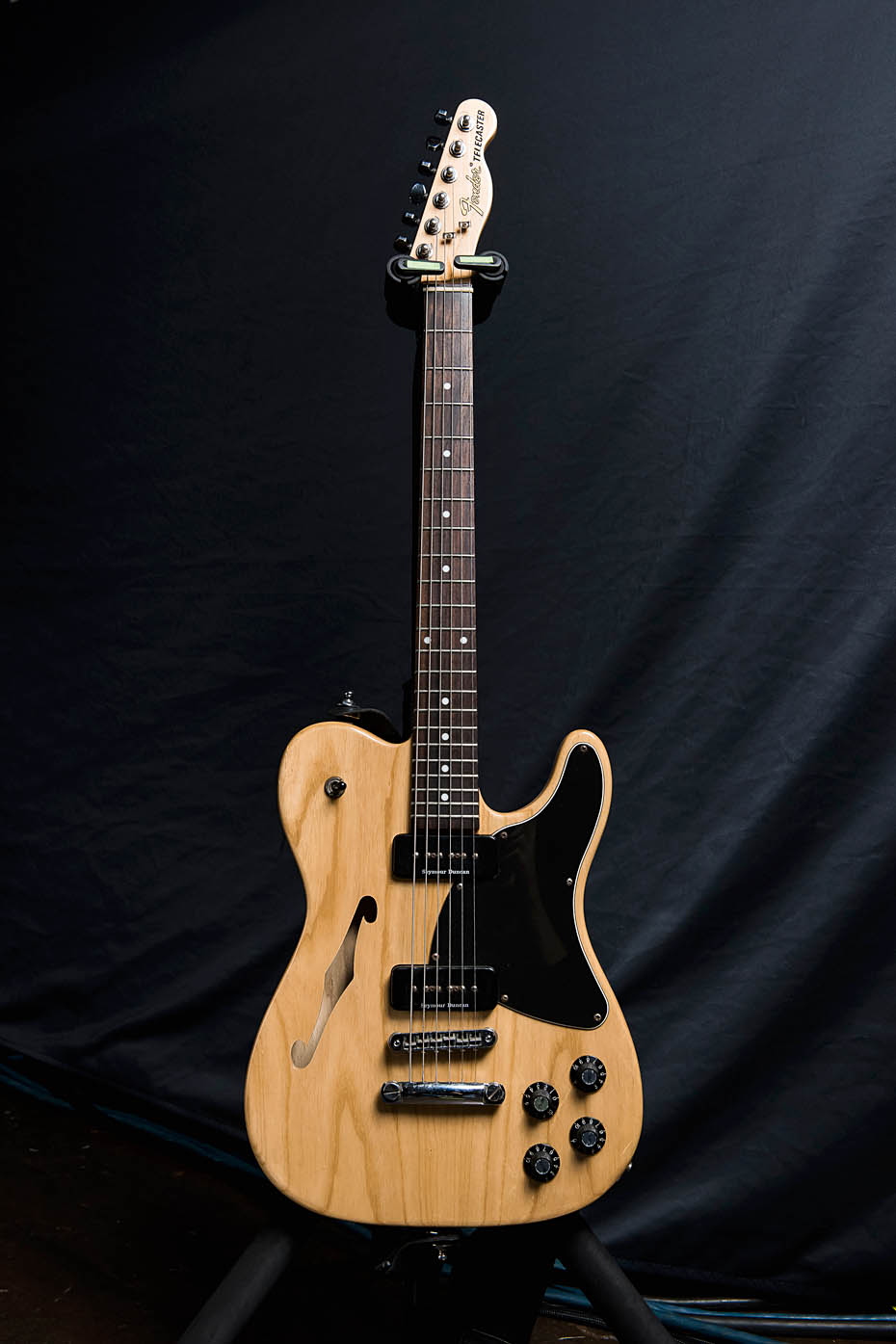
Jim Adkins: "“This is my guitar. No, really, this is my guitar! My signature model Fender. In white! And it has been my guitar for a while now, since 2010-11. It’s an alder body, this might be a maple neck. I am still using .013s. If you put .012s on a Telecaster you won’t go back. When you are playing acoustic all the time and you pick up something that has gauge .010 strings on it, it just feels like a toy.
"The pickups are Seymour Duncan P-90s. They are both bridge pickups. The guitars are all colour-coded but they are all the same guitar. The red one is for songs that we tune a half-step down, because for some reason we wrote a bunch of songs where we tune a half-step down. It seemed like a good idea at the time. And I have one that is in open-E tuning that we have for some of our older songs. And then just a backup.”
Maton EBG808
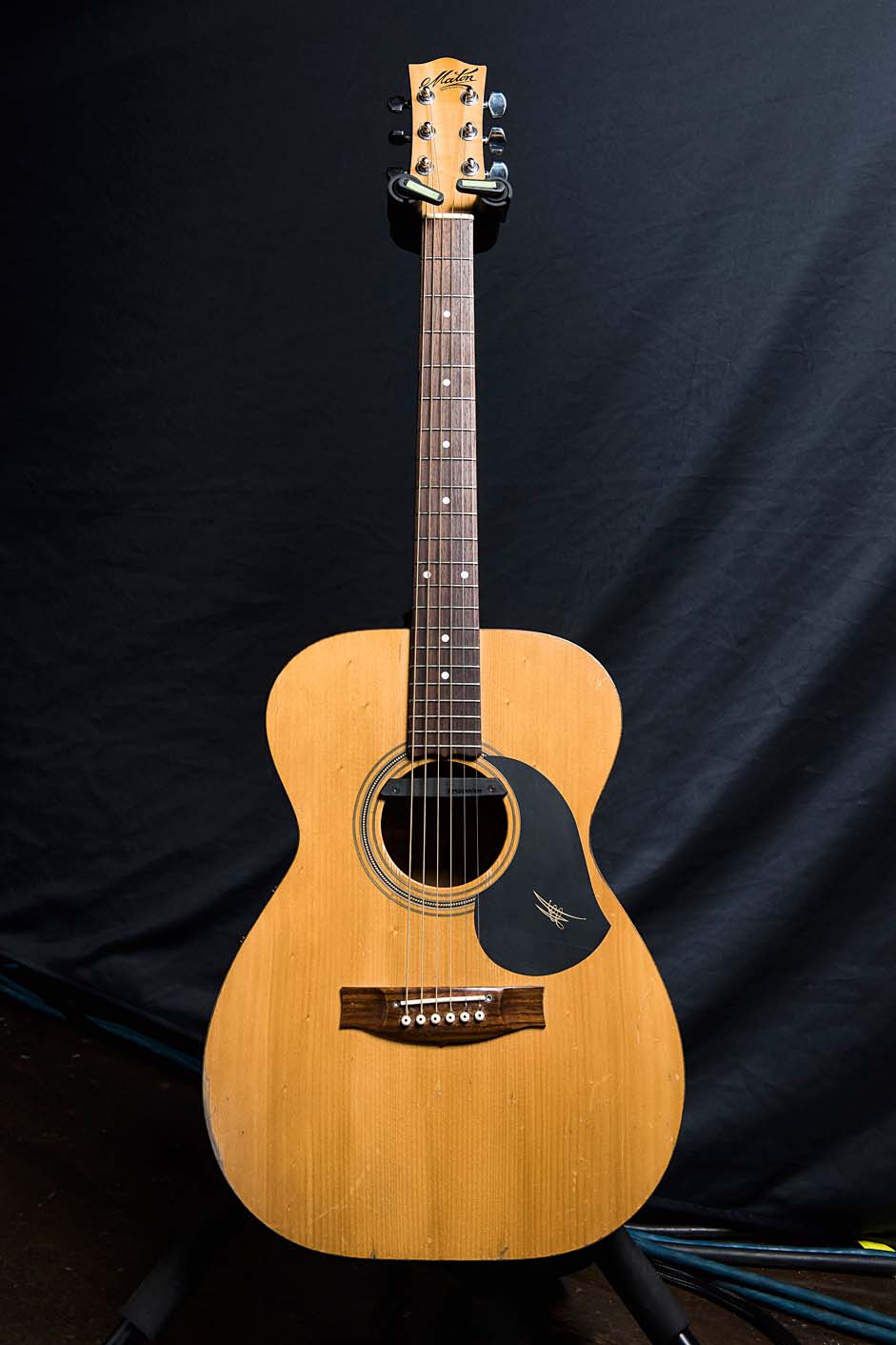
Adkins: “My acoustic guitars are from this Australian company named Maton. This guy was the first I had heard that had electronics built-in. There is something that happens when they build in electronics and it just doesn’t sound quite the same, but this one... The 808, I’ve always liked the smaller-bodied guitars. I feel like they record better for some reason.
Get The Pick Newsletter
All the latest guitar news, interviews, lessons, reviews, deals and more, direct to your inbox!
"I love this guy. It is actually a wacky prototype of all bunya wood, which is some Australian indigenous wood. We went and toured the Maton factory in Melbourne in 2001, before Bleed American came out, and one of the guys at the shop let me take this one. They still make the body type but I have never seen one that is all bunya.”
Fractal Axe-Fx III
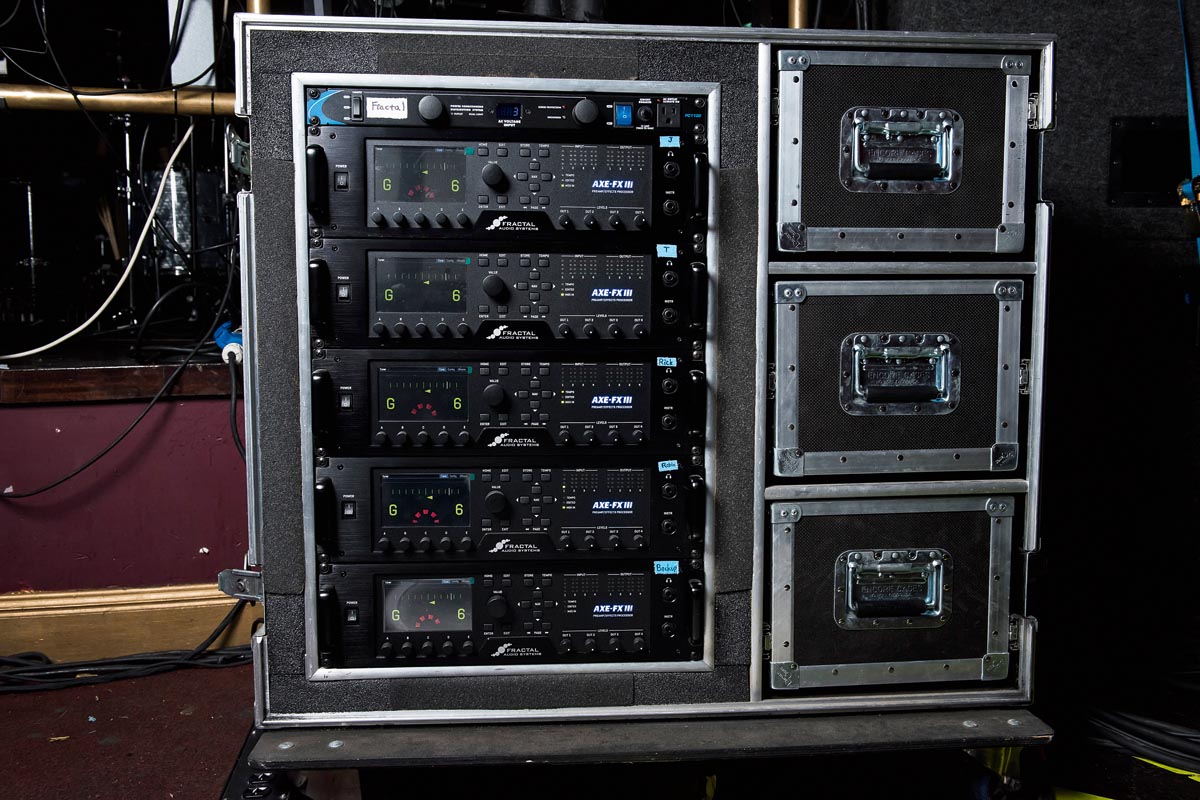
Adkins: “When we were mixing Integrity Blues – Kenny Andrews from Failure was mixing that record – we were at his place, he was showing us what Failure does, and it was just mind-blowing. Like, yeah! ‘Our entire audio production rolls in like 12 pelican cases and we can go play anywhere, and that’s it.’ I’m like, ‘Huh? That sounds really interesting.’
"And so I got one of the Axe-Fx II XL+ to sit with, and took a month, literally, took a month and that is all I did, teach myself the the ins and outs of it. The thing is, you really have to know what you wanna get, or you are just going to be lost in videogame world. There is no manual really, because every firmware update is going to have potentially minimal fixes to significant changes.
"It’s funny, we used to play basements, carrying around two half-stacks and the Ampeg refrigerator, like, what the fuck were we doing!?"
Jim Adkins
"I’ve slowly been trying to get rid of my pedals ‘cos I can’t fucking stand doing the Riverdance. And then the troubleshooting if something’s wrong! [With this] you are not killing the person in the front with the half-stack in their face. It’s funny, we used to play basements, carrying around two half-stacks and the Ampeg refrigerator, like, what the fuck were we doing!?"
"There’s no... WHY!? You don’t need that, man, and the larger the venues you get to, the less and less that matters ‘cos it is all the PA system. It doesn’t matter. You could play with a PigNose amp mic’d up in a stadium and it doesn’t matter."
Adkins: “You have to approach your sound construction, your sound design, from the aspect of, ‘What do I want to do?’ So what I do is, I’ll map out the song for what is happening as the song goes by, and sometimes it might be one tone throughout the whole song, or sometimes it might be drastically different tones for different parts; you are not limited in any way.
"So I could have a crazy rhythm stoner-rock type thing and then break off to another insane, really clean, shimmery jazz chorus, with a shit-load of phaser, and then go back to stoner-rock with one click, and you get all of that. It’s paralyzing at the same time. I can do anything that I want. You have to really zone in to what you want.
"I’ll switch it myself. A lot of people will have someone in tech world shifting your parts, like when you get to a certain section of the song so you don’t have to do Riverdance, and some people can actually run it off a time code. The bummer there is that everything has to be to a click, but the nerd in me thinks it’s sort of cool that you can record a pass of the song, where you are switching things, how you would play them, and then have that be remembered, and then you don’t control that data.
"But, I kinda like being a little bit more spontaneous than that, if I want to get something else. I’ve got a one-foot jazz number than I’m doing. Not full-on Riverdance. Yeah, it’s about eliminating variables.”
RJM Mastermind GT-10 MIDI foot controller
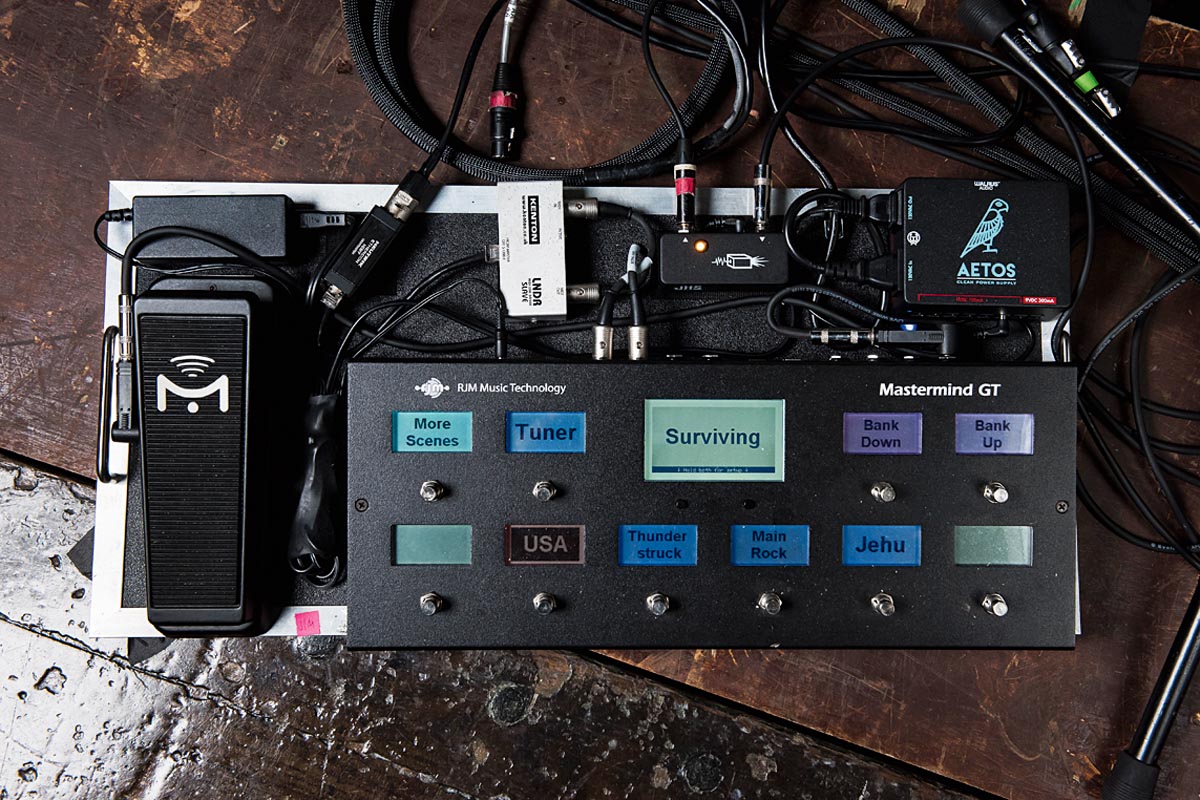
Adkins: "“These things are super-fucking nuts, like, all these buttons are programmable to do anything you want, any parameter, any multiples of parameters. They can control up to 16 different devices. What I am doing here might sound crazy but it really is just scratching the surface of what’s possible.
"I can switch a button here and that could change a scene on the Axe-Fx, triggering a completely different set of sound, and I guess I could be sending a signal to a sampler off stage, or a lighting rig cue, or like if I had lyrics to pop up – whatever you could want to do, this device is qualified for.

"Fractal Audio makes a foot controller that is pretty good. They’re definitely coming for RJM. RJMs are not cheap. The functionality of them, it kinda takes a minute to programme it for what you wanna do, but once you get the hang of it it is really, really awesome."
"You can have any parameter with this: delay times, wah, wet/dry, or all of them at the same time. You can assign your sweeping action to control almost any parameter on the Axe-Fx. ‘House lights off ! Get the milk frothing!’ I have a tuner function here, I have Up and Down buttons that can move song-tosong and pull up a diff erent preset on the Axe-Fx.
"On the Axe-Fx, I have every single song in our catalogue, like a separate, individual preset for that, and then this thing knows the setlist so I will just take the preset in the order of the set. It’s a crazy, insane path to get here, but once you do, it rules.”
Tom Linton's rig
1985 Gibson SG Standard
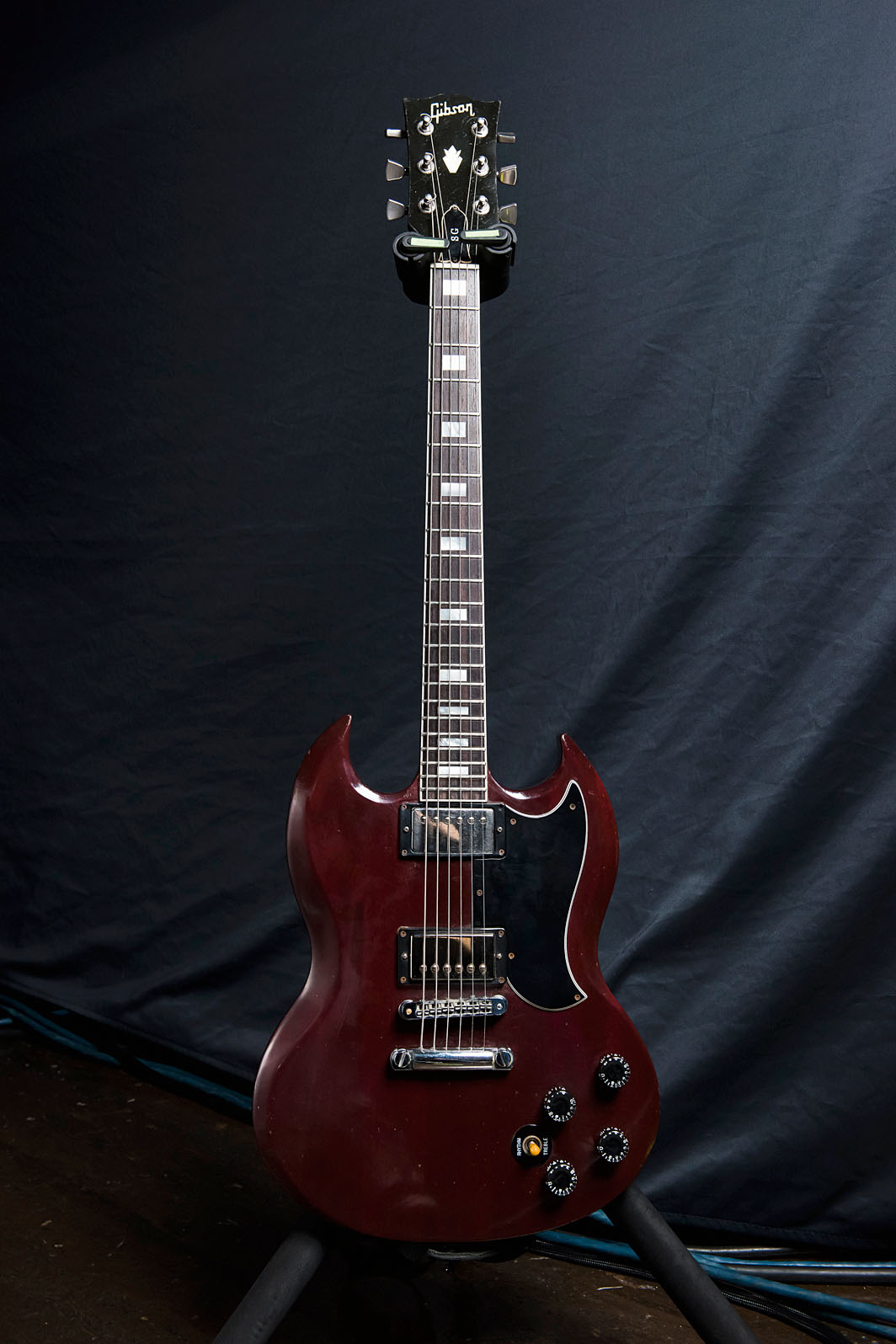
Tom Linton: “This is a 1985 SG, and yeah, I think I’ve have had this one for five years now, and I just love it. I was playing Les Pauls before I had a ’79 Les Paul but it’s just so heavy and so hard to move around onstage with it, for me. I got a pinched nerve in my neck from when I was playing that thing. I just woke up one morning on the bus and my neck was, like, stuck to one side! ‘Yeah, I should probably look for something lighter.’
"I’ve put in a Burstbucker Pro pickup. That’s what’s in it right now, and I am just experimenting with that. I think the [neck pickup] might be the original. The only time I use it is when I am going for a clean sound. When we are doing loud stuff I’ll turn these up all the way and then I’ll turn this guy to four and use it for a clean sound.”
Gibson Challenger II
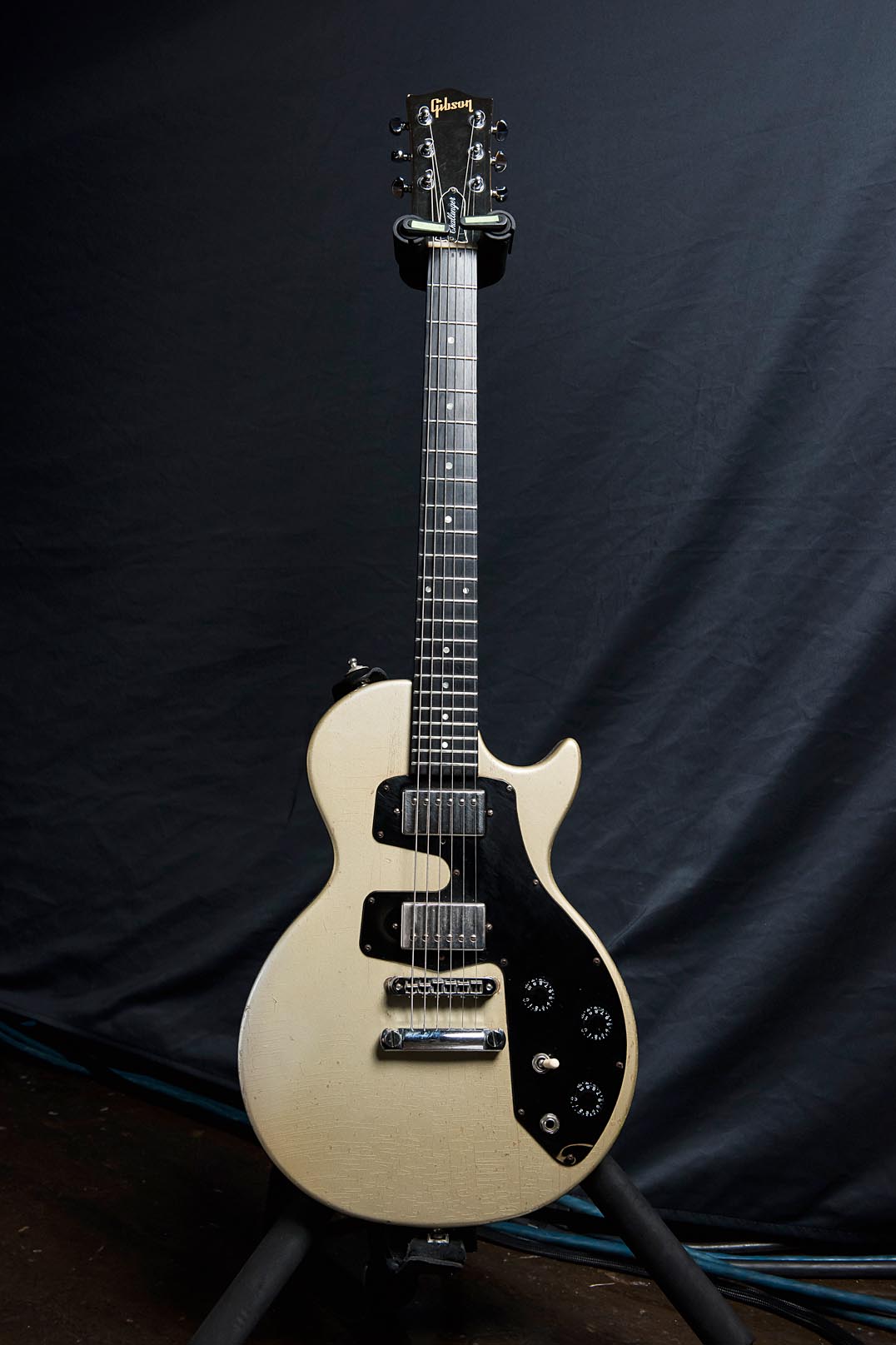
Linton: “I really like it. It is a cheapy guitar, and I did put in a different pickup. I put the Burstbucker Pros in this, too. It’s not the original pickups. When we are playing live they don’t get loud and noisy, no feedback. [What is the finish?] That’s a good question. It kind of looks yellow in this light but... I guess they were old parts at Gibson that were thrown out and they would rig out guitars from those pieces and sell them for a couple of hundred bucks.
"It was cheap. I don’t remember how much but it was really cheap and it has held out. I think I got this right before we started our record Futures. That was when I got this guy. It has held up but you never know, with some accident? I play .013s. We’ve been playing those for a long time and I think we just started playing those because we were breaking a lot of strings onstage. I just think they sound better.”
Unidentified 'eBay' double-cut
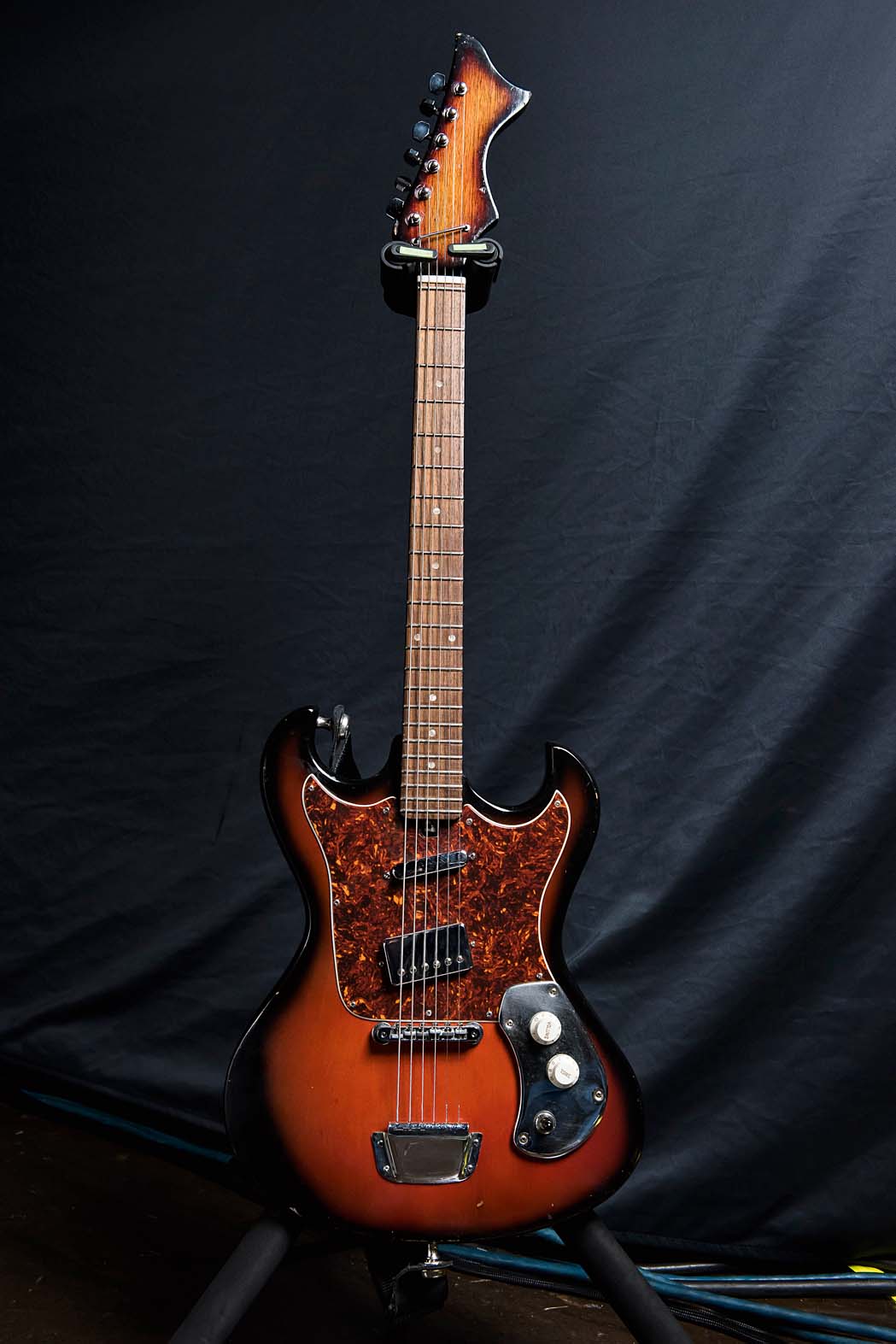
Linton: “I don’t know what this is. I think I got this on eBay and I use this for some songs that we have tuned to an open E. For songs like For Me This Is Heaven and a couple more, but this thing is crazy. Just the ouput on it is insane. It could be a Gibson pickup, maybe. Maybe! [Laughs]
"Someone told me that maybe it was an old Ibanez neck, or some sort of Japanese guitar. Yeah, it was a cheap one. It was another one where I thought, ‘OK, it looks kinda cool, probably won’t sound so good’, but I plugged it in and got lucky. We’ve used it on a couple of recordings, too. It sounds totally different to all the other guitars, which is cool.”
Gibson Les Paul Junior Double Cut
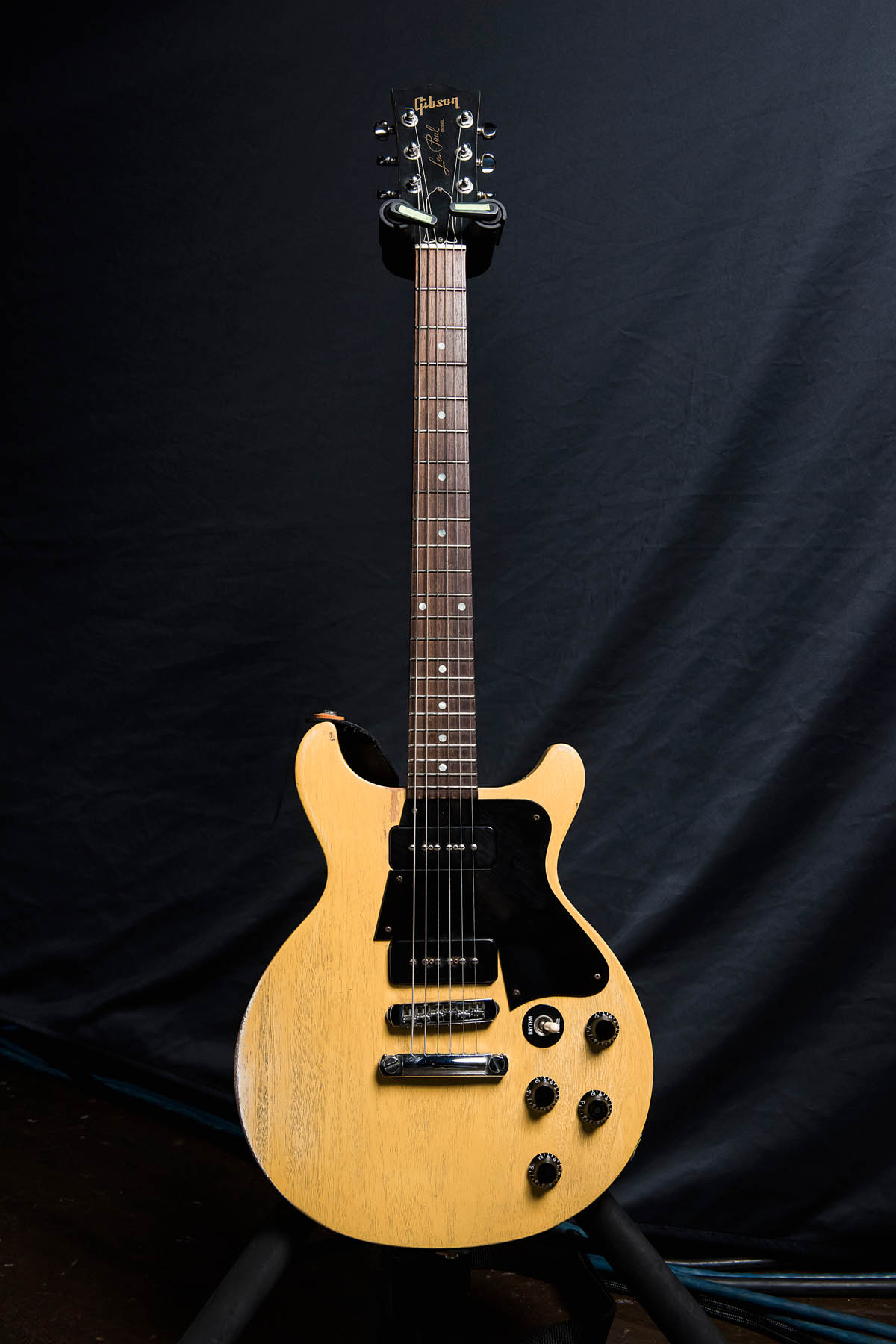
Linton: “This is... I wanna say a 2001. I use this on the song Futures, and it is a backup to the SG, so if the SG breaks a string or whatever. Yeah, I replaced the tuners. I put Grovers on these. I think one of them came off. My old guitar tech put these on there. I love it. I like the P-90s. It just depends on the song.”
Fractal Axe-Fx III and RJM Mastermind GT-10 MIDI foot controller
Linton: “It took a little bit for me to get used to the tone. I think with the last Fractals that we had, I was having a problem having a good distortion sound, but with these new ones I really like it. I really like these a lot more. Yeah, like the hold-outs of some of the notes just kinda fizzle out weird, and that’s a bummer. I still hear it with the IIIs. Maybe there is something I need to fix on it, I’m sure there is! [Laughs]
"I mean, I love my amp – I used an Orange 80 – but sound-wise, for the people mixing front of house and everything else, I think you can control the sound much more on these. I’ll usually have tremolo – just the basic stuff . Tremolo, phaser, and a couple of different delays.”
- Jimmy Eat World's Surviving is out now via RCA.
Jonathan Horsley has been writing about guitars since 2005, playing them since 1990, and regularly contributes to publications including Guitar World, MusicRadar and Total Guitar. He uses Jazz III nylon picks, 10s during the week, 9s at the weekend, and shamefully still struggles with rhythm figure one of Van Halen’s Panama.
“I always felt like that record could have been better if we had worked on it some more”: Looking for a blockbuster comeback album, Aerosmith turned to Van Halen producer Ted Templeman. For Joe Perry, it served as a learning experience
Guitar World Discussion: Who is the most underrated guitar player of all time?













